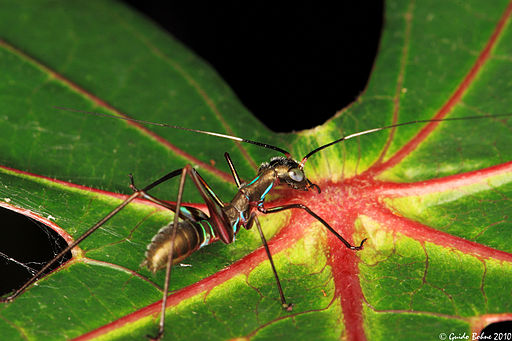Is this the yellow crazy ant’s “Achilles heel”?
Definition-Achilles heel:
a fault or weakness that causes or could cause someone or something to fail.
Source: Merriem-Webster.com
Supercolonies, multiple queens, inter-colony cooperation–all characteristics of the yellow crazy ant which make them extraordinarily successful invaders and biological competitors.
But guess what: Yellow crazy ant queens can’t fly.
How will future generations judge the recent decision of the Queensland Government to leave them the burden of invasive yellow crazy ants (Anoplolepis gracilipes)?
The government has abandoned an eradication program despite knowing the likely catastrophic consequences, despite the program’s feasibility and affordability, and despite their protestations that they value the natural environment. At the same time, they’ve substantially increased funding for wild dog control, a program for the commercial benefit of graziers.
Yellow crazy ants fit the stereotype of a rapacious marauding invader. On Christmas Island, they have killed tens of millions of the iconic (and ecologically important) red crabs and robber crabs. Prior to a multi-million dollar baiting program, they had invaded more than a quarter of the island’s rainforest, reaching densities of more than 2000 foraging ants a square metre and transforming the ecosystem. Where yellow crazy ants flourish, little else does. They can remove nearly all insect life, leaving none for other animals, and kill small animals such as lizards, crabs and bird chicks. They are on the World Conservation Union’s list of ‘100 of the World’s Worst Invasive Alien Species’.
Queensland’s Wet Tropics World Heritage Area is at grave risk, for the ants’ preferred habitat is moist lowland tropical forest. They have recently been found in Little Mulgrave National Park near Edmonton. In July this year Wet Tropics Management Authority executive director Andrew Maclean expressed elation that the federal government had committed $268,000 to searches for invasive ants in the Wet Tropics, but this funding will now serve little purpose.
About the ant
Yellow crazy ants are 1 to 5 mm long, and have very long legs and antennae.
Yellow crazy ants demonstrate the power of numbers and the benefits of social cooperation. They are able to dominate large areas by forming super-colonies with multiple nests and multiple queens. The largest have up to 300 queens and extend over several hundred hectares. They spread by budding. A mated queen leaves her birth nest with some workers and sets up a new nest nearby. The boundary of a super-colony can advance by 3 metres a day.
Suspected to be native to South-East Asia, yellow crazy ants have spread across the world via traded goods. They have arrived in Queensland multiple times, mostly with timber supplies, and now exist in 21 sites, mostly near ports and timber yards.
The adults eat nectar and honeydew and feed their brood on animals killed or scavenged. They don’t sting but squirt formic acid, which blinds and debilitates their prey. Their great numbers allow them to overwhelm animals far exceeding them in size – crabs, lizards, bird chicks.
Although their preferred habitat is moist tropical forest they also live in the subtropics and in harsh, dry areas such as Arnhem Land. They invade horticultural plantations and urban areas.
This detailed article discusses in some detail the various consequences of the yellow crazy ant invasions in Australia and Christmas Island.
The author then questions the Australian government’s wisdom in deciding not to fund an eradication program, especially when a possible Achilles heel of the yellow crazy ant has been identified. The article continues:
Not too late
The Queensland Government has said it is not feasible to eradicate yellow crazy ants but what they mean, and what their website says, is that eradication is not feasible with the insufficient funds previously allocated to the program. We understand it needs something like a million dollars annually. They could eradicate them if they thought they were a priority like wild dogs.
Crazy ants are ideal candidates for eradication because, unlike fire ants, the queens cannot fly. They spread by walking or by hitchhiking on vehicles or ships. Infestations are thus easy to delineate. Most of the Queensland infestations are small and confined to industrial precincts.
To read the rest of this article, visit invasives.org.au.



